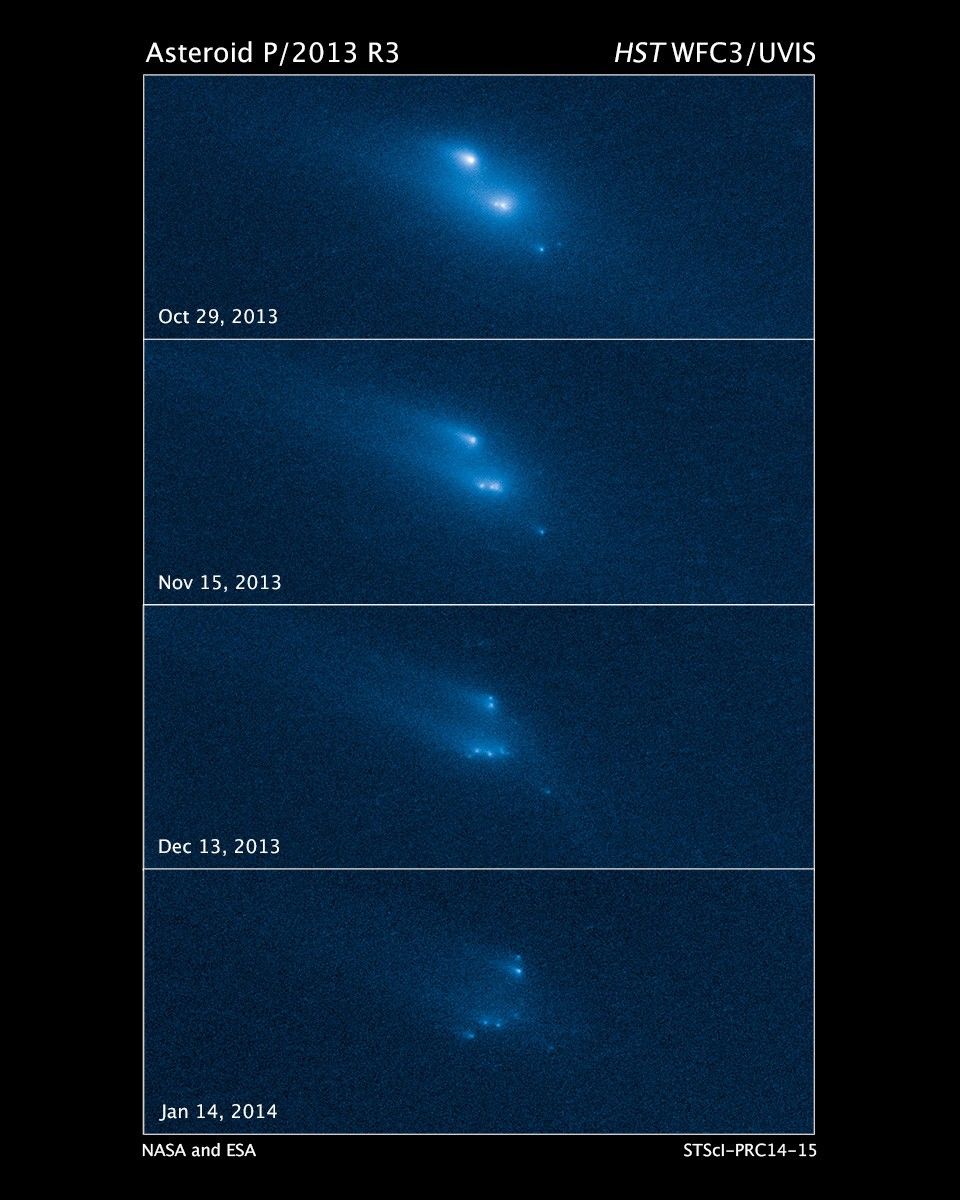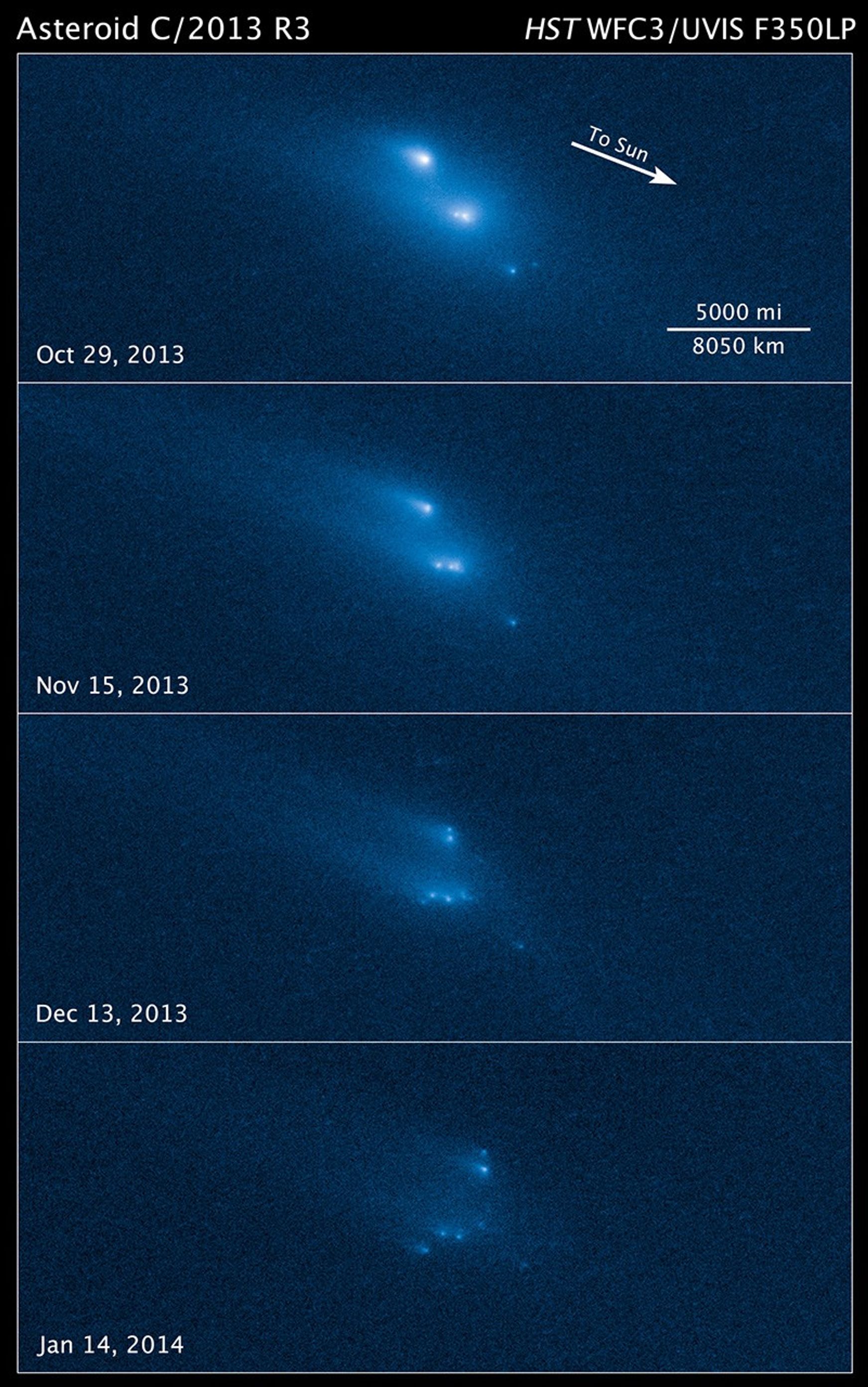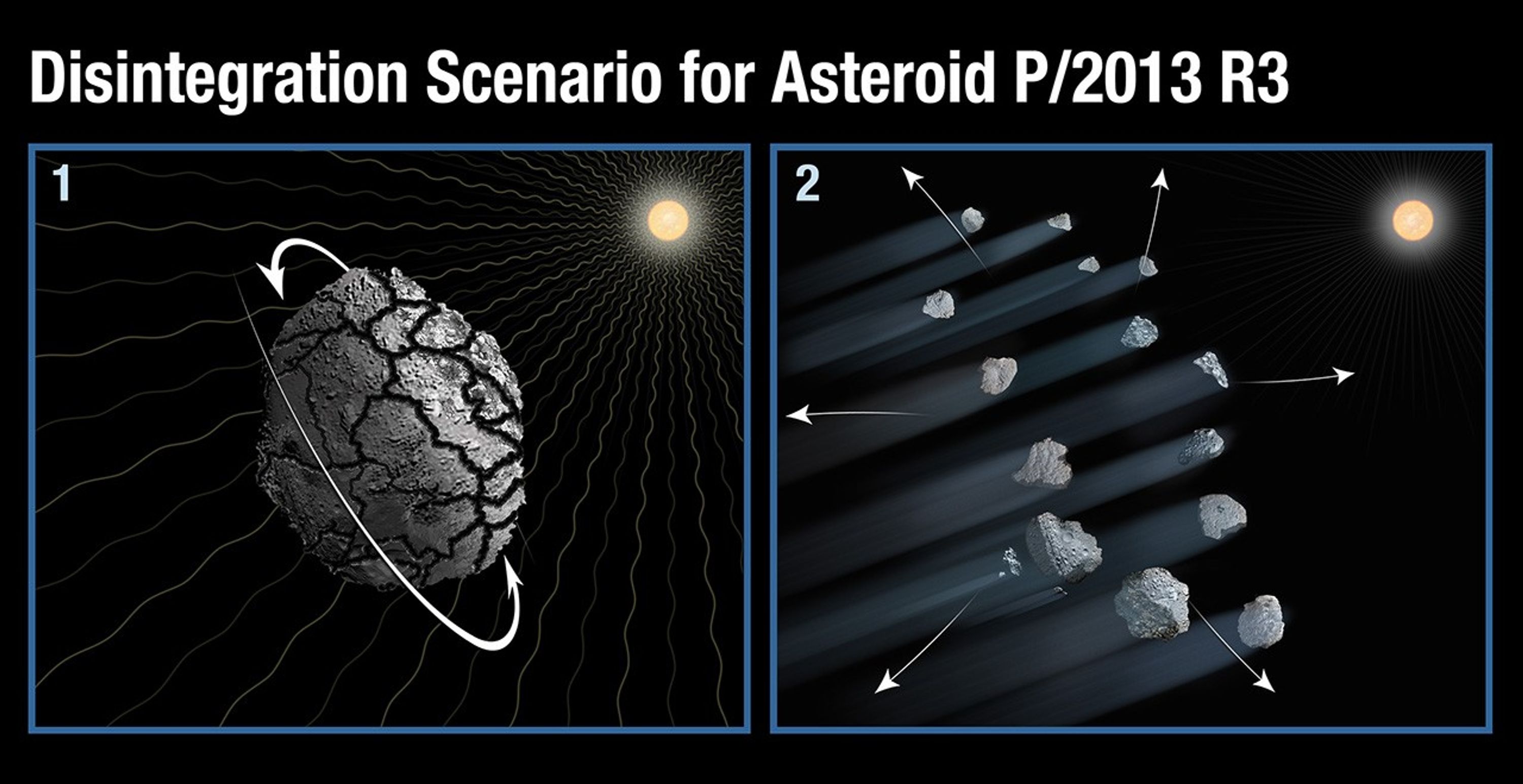1 min read
Disintegration of Asteroid P/2013 R3
This video is assembled from a series of Hubble Space Telescope images reveals the breakup of asteroid P/2013 R3 over a period of several months starting in late 2013. The largest fragments are up to 180 meters (200 yards) in radius, each with "tails" caused by dust lifted from their surfaces and pushed back by the pressure of sunlight. The ten pieces of the asteroid drift apart slowly and show a range of breakup times, suggesting that the disintegration cannot be explained by a collision with another asteroid. One idea for the breakup is that the asteroid was accelerated by sunlight to spin at a fast enough rate to fly apart by centrifugal force. The images were taken in visible light with Hubble's Wide Field Camera 3.
- Release DateMarch 6, 2014
- Science ReleaseHubble Witnesses an Asteroid Mysteriously Disintegrating
- Credit
Related Images & Videos

Disintegration of Asteroid P/2013 R3
This series of Hubble Space Telescope images reveals the breakup of an asteroid over a period of several months starting in late 2013. The largest fragments are up to 180 meters (200 yards) in radius, each with "tails" caused by dust lifted from their surfaces and pushed back by...
Share
Details
Last Updated
Aug 17, 2025
Contact
Media
Claire Andreoli
NASA’s Goddard Space Flight Center
Greenbelt, Maryland
claire.andreoli@nasa.gov




































